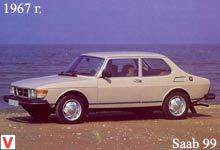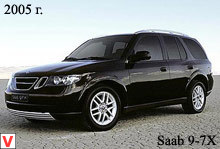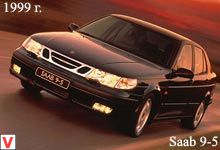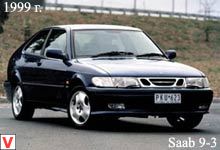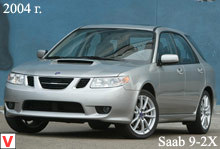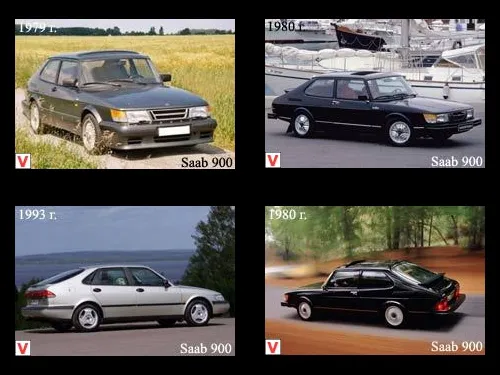
The debut of the Saab 900 came at a time when unification began to dominate the world of cars . At the time when it was almost impossible to remain the original. But it was just such a Saab 900 that was - and in everything, from the exterior to the construction.
The first Saab 900 came off the assembly line in 1978 in two body styles at once: a 3-door hatchback, for its durability and reliability it was extremely beloved by the police, who were used not to spare official vehicles, and the 5-door hatchback, very effective due to the additional rear windows. Compared with the previous, 99th model, in the 900th the front overhang was significantly longer due to the longitudinal arrangement of the engine. But the traditional bumpers for Swedish cars, as well as the old-fashioned curved panoramic glass, have been preserved.
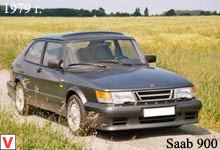
From innovations, the model with the index 900 received a filter for cleaning the air entering the salon. The dashboard is informative, but not overloaded with details. Ignition lock in the usual place - on the console, near the gear lever. The seats of the car have a good shape and are very comfortable. It is possible to tilt the backs of the front seats back and thus obtain a spacious luxury lounge. Trunk volume can be changed depending on the layout: from 600 to 1600 liters with the rear sofa folded. Inertia seat belts, excellent powerful brakes and protective bars in the doors provide a high level of active and passive safety.
In 1980, Saab developed the APC system, which made it possible to regulate the flow of fuel by increasing or decreasing the pressure of the turbocharger. In September 1982, the Saab 900 model range was supplemented with a sedan version. In 1983, the Saab 900 Turbo 16S came out with a 16-valve turbocharged engine. This modification is also known as Aero. With the launch of the release in 1986, the Saab 900 convertible (Convertible) opened another significant page in the company's history. Today, the first generation Saab 900 is a style.
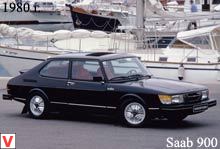
Unusual, original, albeit a bit outdated - but the style! Long overhangs, the characteristic descending line of the tail section, almost vertical windshield and large doors that cover the thresholds of the lower edges. In short, the first generation Saab 900 is the embodiment of control and reliability. In the history of the Saab 900, there are two generations: the first (1978-1993) and the second generation (1993-1998). The lineup of the Saab 900 I generation lasted until March 1993.
The new modification (New Generation) was already far from being a purely Swedish project, but rather the fruit of joint cooperation, since the Scandinavian company became part of the General Motors concern since 1990 and, of course, was forced to obey the will of the American owners to a certain extent. The Saab 900 II inherited from the newly-minted German “relative Opel Vectra” the transverse engine layout, the shape of the base of the body (greatly enhanced by Swedish experts), as well as the suspension design. Exterior Saab 900 second generation is significantly different from the first. He was a bright individualist, causing polar evaluations to those around him.
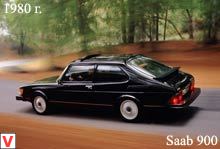
Saab 900 II is less extravagant. There is neither a low long “nose”, nor a panoramic windshield, or a sloping rear end. But the characteristic features in the silhouette still remained. And the ignition lock is still between the seats. At the same time in ergonomics, the "nine hundredth" second generation took a step forward compared to its predecessor: very good seats, comfortable steering wheel rim, powerful stove. The dashboard looks even more massive, and the climate controls are moved to the center console.
The salon has become more modern, but at the same time it has retained a peculiar style. Swedish designers have tried to arrange the interior as original as possible. As for additional equipment, all versions of this generation are equipped with power steering, central locking, electric windows and an airbag for the driver. In the SE version, in addition, there are leather trim, air conditioning, alloy wheels and fog lights. In short, the interior trim can be described as more homogeneous than in the previous generation of the 900th.

As in the cars of the first generation, the trunk of the Saab 900 II is very spacious - from 495 to 1315 liters, and the folding section wall of the rear seat is available in all versions. The second-generation Saab 900 features excellent engines and powerful brakes. Cars confidently hold direct, unshakable steering does not force to strain. Time has shown that the stabilizer bar, as well as the rear semi-dependent suspension, practically do not break here.
Excellent reliability and different steering gear. Plus the highest level of security. The car was equipped with a rear seat, the design of which included strained seat belts, three diagonal-lap seat belts for passengers in the rear seat, and a system for protecting the rear section of the passenger compartment from side impacts.
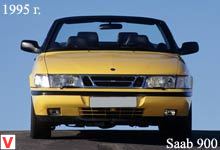
These innovations in the automotive industry allowed Saab to gain the fame of one of the safest cars in the world. To decorate the model range of the Saab 900 II was called up a new convertible, which in May 1994 began to be assembled at the factory of the notorious Finnish company Valmet. The highest in the world, Swedish safety standards have led to the fact that this model has become almost the most equipped for this indicator in its class: ABS on all versions, traction control system on turbo versions, crossbar, built into the back of the folding seat. But most surprisingly, the new convertible was made all-season.
The SAAB 900 Convertible could be operated year-round, since equipped with a double awning, heated rear window and a powerful stove, as did the northern roots. Saab 900 II is equipped with engines with normal ventilation and with a turbocharger, having a working volume of 2.0 liter cylinder, 2.3 liter and 2.5-liter “opelevskim” V6. The power of these motors ranged from 133 to 185 liters.
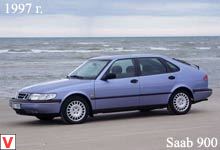
from. The most preferable in terms of dynamics can be called a 2.3-liter 185-strong turbo version, which, on request, was completed with the Sensonic system, which allows you to change gears manually - without a clutch pedal. For other models, there are either 5-speed conventional manual gearbox or 4-band automatic.
